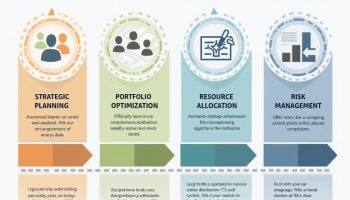
The Difference Between Shareholders and Stakeholders
The fundamental difference between shareholders and stakeholders lies in their relationship to an organization, with shareholders being legal owners of company shares focused on financial returns, while stakeholders represent a broader group with various interests in the company’s performance. This distinction creates unique dynamics in corporate governance, where shareholders seek direct financial benefits through dividends and voting rights, and stakeholders are concerned with wider impacts ranging from employee welfare to community and environmental considerations.
Key Takeaways:
- Shareholders are financial investors with legal ownership and voting rights, while stakeholders include employees, customers, suppliers, and communities.
- Shareholders primarily focus on financial returns and short-term performance.
- Stakeholders consider long-term sustainable growth and broader organizational impacts.
- Corporate governance is evolving to balance both shareholder and stakeholder interests.
- Modern companies recognize that addressing stakeholder needs can enhance overall shareholder value.
Understanding the distinction between shareholders and stakeholders is essential for any business operation. Shareholders directly own portions of a company through stock purchases, giving them specific legal rights and financial interests. Their primary concern often centers on return on investment and company profitability.
Stakeholders encompass a much larger group. This includes employees concerned with job security and workplace conditions, customers looking for quality products and services, suppliers dependent on fair business practices, and communities affected by corporate operations. Their interests extend beyond pure financial performance.
Corporate strategies now increasingly recognize the importance of balancing these different perspectives. Research shows companies that address both shareholder and stakeholder concerns often achieve better long-term results. This balanced approach creates sustainable growth while maintaining financial stability.
The rise of ESG (Environmental, Social, and Governance) investing has further highlighted the connection between stakeholder management and corporate governance. Companies that ignore stakeholder interests face potential reputation damage, regulatory challenges, and customer backlash.
Effective business leaders understand that shareholder value doesn’t exist in isolation. By addressing the needs of employees, customers, and communities, organizations build stronger foundations for sustained financial performance. This integrated approach to management has become a competitive necessity in today’s business environment.
“In the evolving landscape of corporate governance, the fundamental distinction between shareholders and stakeholders emphasizes that true value lies not just in financial returns, but in the broader impacts on employees, communities, and the environment. By harmonizing the interests of both groups, organizations can achieve sustainable growth that ultimately benefits all.”
The Shareholder Perspective
Shareholders hold a unique position in any company’s structure as the actual owners of company shares with direct financial interests. The fundamental difference between shareholder and stakeholder lies in their relationship to the organization – shareholders have legal ownership while stakeholders have a broader interest or involvement with the company.
Shareholders invest capital with a primary motivation of generating financial returns through dividends and stock appreciation. Unlike other corporate participants, they possess voting rights that allow them to influence major corporate decisions including electing board members, approving mergers, and authorizing significant business changes.
Key Shareholder Rights and Interests
When examining the difference between shareholder and stakeholder priorities, several distinct shareholder advantages become apparent:
- Financial Returns: Shareholders expect to receive dividends and benefit from increasing share values as compensation for their investment risk.
- Voting Powers: They can vote on critical corporate matters during annual meetings and special sessions.
- Information Access: They’re entitled to regular financial disclosures and corporate performance reports.
- Legal Protections: Corporate law provides specific protections for shareholder interests.
The difference between shareholder and stakeholder approaches affects how companies operate. The traditional shareholder model prioritizes maximizing profits and shareholder value above other considerations. This perspective has historically dominated American corporate governance, while European business models have more frequently embraced stakeholder-inclusive approaches.
Shareholder activism represents another important dimension showing the difference between shareholder and stakeholder influence. Activist shareholders leverage their ownership positions to pressure management for changes ranging from strategic redirections to environmental policies.
| Aspect | Shareholder Focus | Stakeholder Focus |
|---|---|---|
| Primary Concern | Financial returns | Balanced interests |
| Timeframe | Often short-term | Typically long-term |
| Decision Influence | Direct through voting | Indirect through pressure |
| Legal Standing | Protected by corporate law | Variable legal recognition |
The difference between shareholder and stakeholder viewpoints creates tension in strategic management. While shareholders may push for immediate profits, other stakeholders might prioritize sustainable growth, employee welfare, or community impact. Finding the right balance between these perspectives has become increasingly critical for business success.
Many companies now recognize that overemphasizing the difference between shareholder and stakeholder interests can be counterproductive. Progressive organizations are implementing governance structures that acknowledge the difference between shareholder and stakeholder needs while finding complementary approaches that serve both groups effectively.
According to a 2021 Harvard Business Review article, companies that focus on stakeholder value outperform those that prioritize shareholder value alone by 75%.
hbr.org
The Stakeholder Landscape
Understanding the difference between shareholder and stakeholder is crucial for effective corporate management. While shareholders represent a specific subset with financial interests, stakeholders encompass a much broader ecosystem of individuals and groups affected by an organization’s actions.
The difference between shareholder and stakeholder lies primarily in their relationship to the company. Shareholders own stock in the organization, while stakeholders may not have financial ownership but are impacted by or can impact company operations. This fundamental difference between shareholder and stakeholder drives different expectations and responsibilities.
Stakeholders include several distinct groups beyond just financial investors:
- Employees: People who work for the company and depend on it for their livelihood
- Customers: Those who purchase and use the company’s products or services
- Suppliers: Businesses that provide materials or services to the company
- Communities: Local populations affected by company operations
- Government entities: Regulatory bodies overseeing company compliance
- Competitors: Other businesses operating in the same market space
Each stakeholder group holds unique interests in the company’s performance. The primary difference between shareholder and stakeholder perspectives is often reflected in time horizons – shareholders typically focus on quarterly results, while stakeholders consider long-term impacts on various aspects of business operations.
Stakeholder Theory and Business Impact
Stakeholder theory, developed by R. Edward Freeman, argues that businesses should create value for all stakeholders, not just shareholders. This theory highlights another key difference between shareholder and stakeholder approaches – the scope of responsibility. The difference between shareholder and stakeholder mindsets affects how companies approach:
- Strategic planning and resource allocation
- Risk assessment and management
- Corporate social responsibility initiatives
- Communication and reporting practices
- Ethical decision-making frameworks
Companies that effectively manage the difference between shareholder and stakeholder interests often implement comprehensive stakeholder engagement strategies. These businesses recognize that strong stakeholder relationships provide competitive advantages through:
- Enhanced reputation and brand loyalty
- Improved employee retention and productivity
- Greater resilience during market disruptions
- More sustainable business practices
- Reduced regulatory and community conflicts
The difference between shareholder and stakeholder value becomes particularly evident during corporate decision-making. While pure shareholder models prioritize maximizing financial returns, stakeholder-oriented approaches consider a broader range of impacts and outcomes. This fundamental difference between shareholder and stakeholder philosophies shapes corporate governance structures and organizational cultures.

Governance Models: Shareholder vs. Stakeholder Approach
Corporate governance reflects how companies balance their obligations between different groups. The difference between shareholder and stakeholder approaches fundamentally shapes how businesses operate and make decisions. While the shareholder model prioritizes profit maximization, the stakeholder approach considers a wider spectrum of interests.
The shareholder governance model centers exclusively on creating value for those who own company shares. This approach, popular in Anglo-American business environments, prioritizes financial metrics, quarterly earnings, and stock price appreciation. Companies following this model focus on the difference between shareholder and stakeholder priorities by emphasizing short-term financial gains over longer-term considerations. Boards make decisions primarily to benefit shareholders, with other concerns taking a secondary position.
In contrast, the stakeholder governance model acknowledges that companies have responsibilities beyond maximizing shareholder returns. This approach, more common in European and Japanese businesses, balances the interests of all parties affected by corporate activities. The difference between shareholder and stakeholder models becomes evident in how companies identify key stakeholders and incorporate their concerns into strategic planning.
Key Differences in Governance Approaches
The core difference between shareholder and stakeholder models reveals itself in several key areas:
- Decision-making timeframe – Shareholder models often prioritize quarterly results while stakeholder approaches favor sustainable long-term growth
- Risk management – Stakeholder models typically demonstrate more cautious risk approaches considering broader impacts
- Board composition – Stakeholder-focused companies often include representatives from various stakeholder groups
- Transparency requirements – Stakeholder governance usually demands more comprehensive reporting on non-financial metrics
- Crisis response – Differences between shareholder and stakeholder approaches become most visible during difficult business conditions
This table summarizes the fundamental differences between these governance approaches:
| Aspect | Shareholder Model | Stakeholder Model |
|---|---|---|
| Primary focus | Maximize shareholder wealth | Balance multiple interests |
| Key metrics | Stock price, EPS, dividends | Financial and non-financial indicators |
| Time horizon | Short to medium-term | Medium to long-term |
| Decision drivers | Financial returns | Balanced scorecard approach |
| Success defined by | Shareholder returns | Multiple stakeholder satisfaction |
The difference between shareholder and stakeholder orientation significantly impacts how companies approach stakeholder satisfaction and engagement. Organizations implementing stakeholder governance typically develop more robust community relations programs, environmental initiatives, and employee engagement strategies. While this might appear to sacrifice short-term financial gains, evidence suggests stakeholder-oriented companies often demonstrate greater resilience during economic downturns.
Your company’s choice between these models will influence everything from strategic planning to daily operations. The difference between shareholder and stakeholder approaches represents one of the most consequential decisions in modern business leadership.

Practical Implications for Business Leadership
Understanding the difference between shareholder and stakeholder directly impacts how you’ll approach business leadership and strategic decision-making. As corporate environments evolve, balancing these competing interests has become essential for sustainable success.
The difference between shareholder and stakeholder creates distinct challenges for executives. Shareholders demand financial returns, while stakeholders expect consideration of broader impacts. This tension requires you to develop flexible governance strategies that satisfy both groups.
When leading organizations, you’ll need to implement these practices to effectively manage the difference between shareholder and stakeholder priorities:
- Create transparent communication channels with all stakeholder groups
- Develop metrics that measure both financial and non-financial performance
- Establish governance structures that incorporate diverse perspectives
- Build decision-making frameworks that consider short and long-term impacts
- Conduct regular stakeholder mapping and analysis
Stakeholder Management Strategies
Effective stakeholder satisfaction strategies require recognizing the fundamental difference between shareholder and stakeholder concerns. You can implement a balanced approach by:
- Prioritizing stakeholders based on influence and interest
- Developing tailored engagement plans for each group
- Creating feedback mechanisms to capture stakeholder concerns
- Establishing clear accountability for stakeholder relationships
- Integrating stakeholder insights into strategic planning
The table below illustrates how to address the difference between shareholder and stakeholder needs:
| Focus Area | Shareholder Approach | Stakeholder Approach |
|---|---|---|
| Timeframe | Short-term quarterly results | Long-term sustainable growth |
| Metrics | Financial returns, EPS | Balanced scorecard, ESG factors |
| Reporting | Financial statements | Integrated reporting frameworks |
| Engagement | Annual meetings, investor calls | Multi-channel ongoing dialogue |
| Risk Management | Financial risk mitigation | Comprehensive risk assessment |
By adopting a comprehensive strategic planning approach, you’ll navigate the difference between shareholder and stakeholder needs more effectively. This requires understanding that while shareholders focus primarily on returns, stakeholders consider broader impacts including environmental, social, and governance factors.
Leading in this complex environment demands that you develop skills in conflict resolution, ethical decision-making, and cross-functional collaboration. The difference between shareholder and stakeholder perspectives can create tensions, but also opportunities for innovation when properly managed through effective stakeholder engagement approaches.
Companies with strong stakeholder management practices outperform their peers by over 20% in terms of business performance and profitability.
hbr.org
Future of Corporate Governance
Corporate governance is evolving beyond the traditional shareholder-focused model toward a more inclusive approach that recognizes multiple stakeholders. The difference between shareholder and stakeholder perspectives continues to reshape how companies operate and make decisions.
Organizations increasingly acknowledge that long-term success requires balancing the difference between shareholder and stakeholder interests rather than prioritizing one group exclusively. This shift reflects growing recognition that sustainable business practices benefit all parties involved in a company’s ecosystem.
Several factors are driving this transformation in corporate governance:
- Environmental, Social, and Governance (ESG) considerations have moved from peripheral concerns to central business priorities
- Investor activism now extends beyond financial returns to include ethical practices
- Regulatory frameworks increasingly require transparency in stakeholder impacts
- Public expectations demand companies demonstrate responsible citizenship
The difference between shareholder and stakeholder models becomes particularly evident when examining emerging governance trends. Companies that successfully integrate stakeholder satisfaction practices often outperform competitors focused solely on shareholder returns.
Stakeholder Integration Strategies
Forward-thinking organizations are adopting specific approaches to bridge the difference between shareholder and stakeholder priorities:
- Creating board-level committees dedicated to stakeholder concerns
- Implementing stakeholder impact assessments for major decisions
- Developing comprehensive stakeholder communication systems
- Establishing performance metrics that track stakeholder outcomes alongside financial results
The difference between shareholder and stakeholder approaches becomes less pronounced as companies realize that addressing broader stakeholder needs ultimately enhances shareholder value. Effective stakeholder engagement leads to reduced risks, enhanced reputation, and more sustainable growth.
This table illustrates how the corporate governance landscape is transforming:
| Traditional Shareholder Focus | Emerging Stakeholder-Inclusive Approach |
|---|---|
| Quarterly profit maximization | Balanced long-term value creation |
| Limited stakeholder consultation | Ongoing multi-stakeholder dialogue |
| Financial metrics dominate | Integrated performance indicators |
| Narrow board expertise | Diverse representation and expertise |
The difference between shareholder and stakeholder perspectives will continue to influence corporate governance evolution as companies navigate complex social, environmental, and economic challenges. Organizations that understand this difference between shareholder and stakeholder interests and proactively address both will likely achieve more resilient and sustainable success.






